Why Clean Air Circulation Matters for Your San Jose Home
Clean air circulation is the continuous movement of fresh, filtered air throughout your indoor spaces, replacing stale air and removing pollutants. For San Jose homeowners, this isn't just about comfort - it's about protecting your family's health in a region where wildfire smoke and seasonal allergens can make indoor air quality a serious concern.
Key strategies for improving clean air circulation:
- Source Control: Eliminate or reduce pollutant sources (low-VOC products, proper ventilation)
- Ventilation: Increase fresh air exchange through windows, fans, and HVAC systems
- Filtration: Use high-quality air filters and purifiers to remove particles and contaminants
- HVAC Optimization: Set thermostat fan to "ON" and maintain clean, unblocked vents
The stakes are higher than you might think. Research shows that indoor air quality can be more than ten times more polluted than outdoor air. Without proper circulation, pollutants like dust, pet dander, volatile organic compounds (VOCs), and even viruses can build up to dangerous levels in your home.
Poor air circulation doesn't just make your home stuffy - it can trigger allergies, worsen asthma, cause headaches, and lead to more serious respiratory issues over time. This is especially concerning for vulnerable populations like children, elderly family members, and anyone with existing health conditions.
The good news? Improving your home's air circulation is more straightforward than most homeowners realize. By focusing on three core strategies - controlling pollution sources, enhancing ventilation, and upgrading filtration - you can dramatically improve your indoor air quality and create a healthier living environment.
I'm Tony Lara, and I've spent years helping San Jose families solve complex HVAC challenges, including optimizing systems for better clean air circulation. Through my experience in operations and customer service, I've seen how proper air circulation can transform a home's comfort and health.
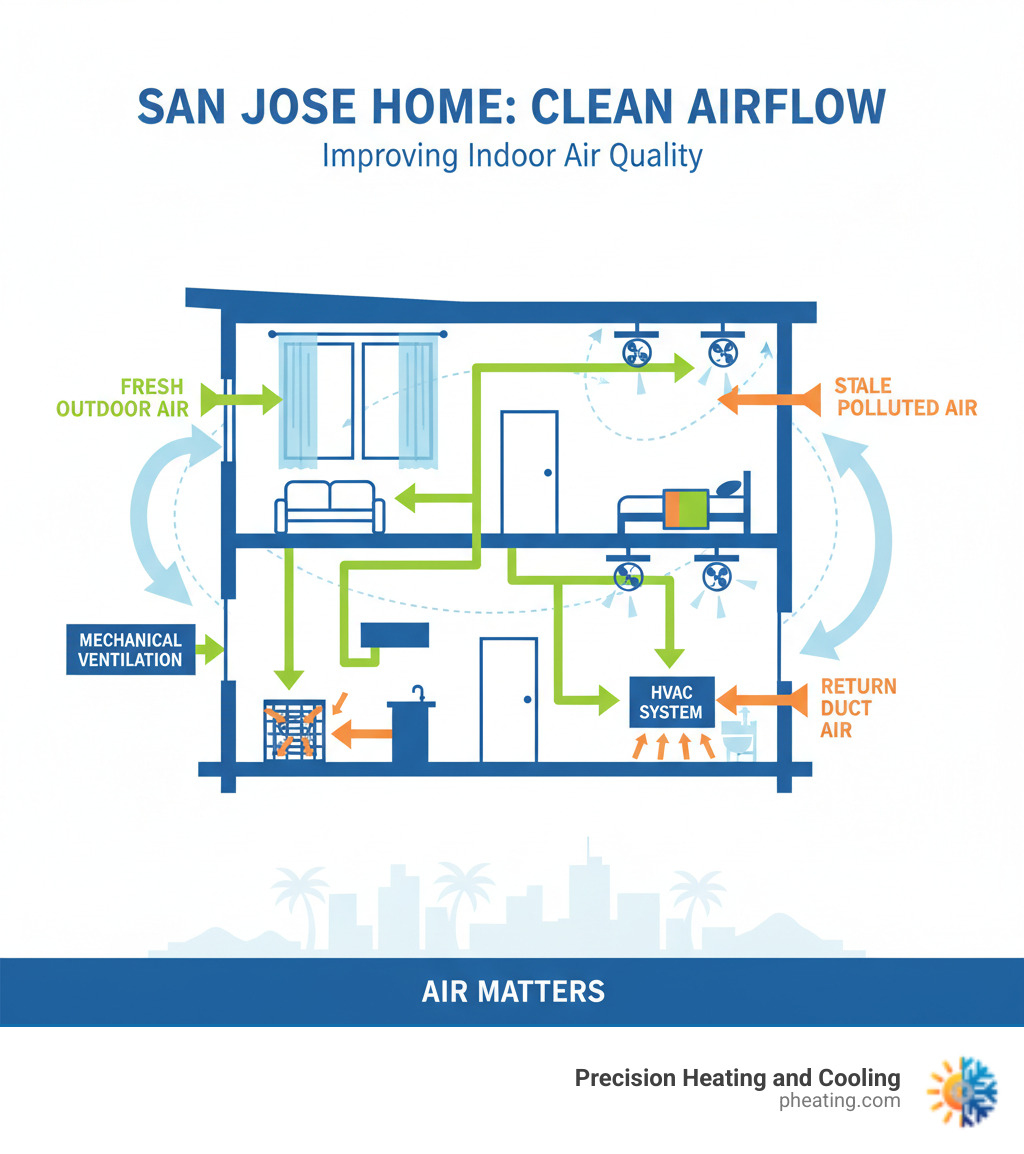
The Hidden Dangers of Stagnant Air: Why Circulation Matters
Think of your home like a pair of lungs. Just as we need to breathe in fresh air and exhale what we don't need, your house needs that same kind of clean air circulation to stay healthy. When air sits still for too long, it's like holding your breath - and that's when trouble starts brewing.
Without proper air movement, your home becomes a collection point for all sorts of unwanted guests. Volatile organic compounds (VOCs) sneak in from furniture, cleaning supplies, and paint. Dust mites set up camp in your carpets and bedding, while pet dander from Fluffy floats around long after she's left the room. Mold spores love humid, still air, and unfortunately, viruses and bacteria stick around much longer when there's no fresh air to sweep them away.
Here in the San Jose area, we face some unique challenges that make clean air circulation even more critical. Wildfire smoke from fires as far away as Napa and Sonoma can drift into our homes, carrying tiny particles that are especially harmful to breathe. Seasonal pollen also loves to settle in when the air isn't moving properly.
The CDC has found that respiratory viruses spread much more easily in crowded indoor spaces with poor airflow. Without good air circulation, these microscopic troublemakers just keep building up instead of being diluted or filtered out. Taking Steps for Cleaner Air for Respiratory Virus Prevention from the CDC offers excellent guidance on protecting your family.
Short-Term Effects of Poor Air Quality
When your home's air gets stagnant, your body usually lets you know pretty quickly. You might notice eye irritation that makes you want to rub them constantly, or nose and throat inflammation that feels like you're coming down with something.
Dizziness and fatigue are surprisingly common when indoor air quality drops. You know that feeling when you're inexplicably tired even though you got plenty of sleep? Poor air circulation might be the culprit. Coughing that seems to come from nowhere and worsened allergy symptoms are also telltale signs that your home needs better airflow.
These symptoms might seem minor, but they're your body's way of saying "help!" Don't ignore them.
Long-Term Health Risks from Inadequate Ventilation
The real concern isn't just feeling stuffy for a day or two - it's what happens when poor air quality becomes the norm in your home. Over time, breathing polluted indoor air can lead to serious health problems, especially for children, older adults, and anyone already dealing with respiratory issues.
Chronic respiratory diseases like asthma and emphysema can develop or get much worse when you're constantly breathing contaminated air. Even more alarming, research links poor indoor air quality to heart disease - those tiny particles don't just stay in your lungs. They can travel through your bloodstream and affect your cardiovascular system.
The central nervous system can also take a hit from long-term exposure to indoor pollutants. We're talking about effects that go far beyond just your breathing - your liver, spleen, blood, and even reproductive system can be impacted.
This isn't meant to scare you, but rather to help you understand why we at Precision Heating and Cooling take indoor air quality so seriously. With over two decades of experience serving Bay Area families, we've seen how proper clean air circulation can transform a home from unhealthy to truly comfortable. More info about improving your home's air quality can help you take the next steps toward a healthier home.
The Three Pillars of Improving Indoor Air Circulation
Think of clean air circulation like a three-legged stool - remove any one leg, and the whole thing falls over. That's exactly how improving your home's air quality works. We've found that the most effective approach relies on three interconnected strategies: Source Control, Ventilation, and Filtration. Master all three, and you'll create a healthier, more comfortable environment for your San Jose family.
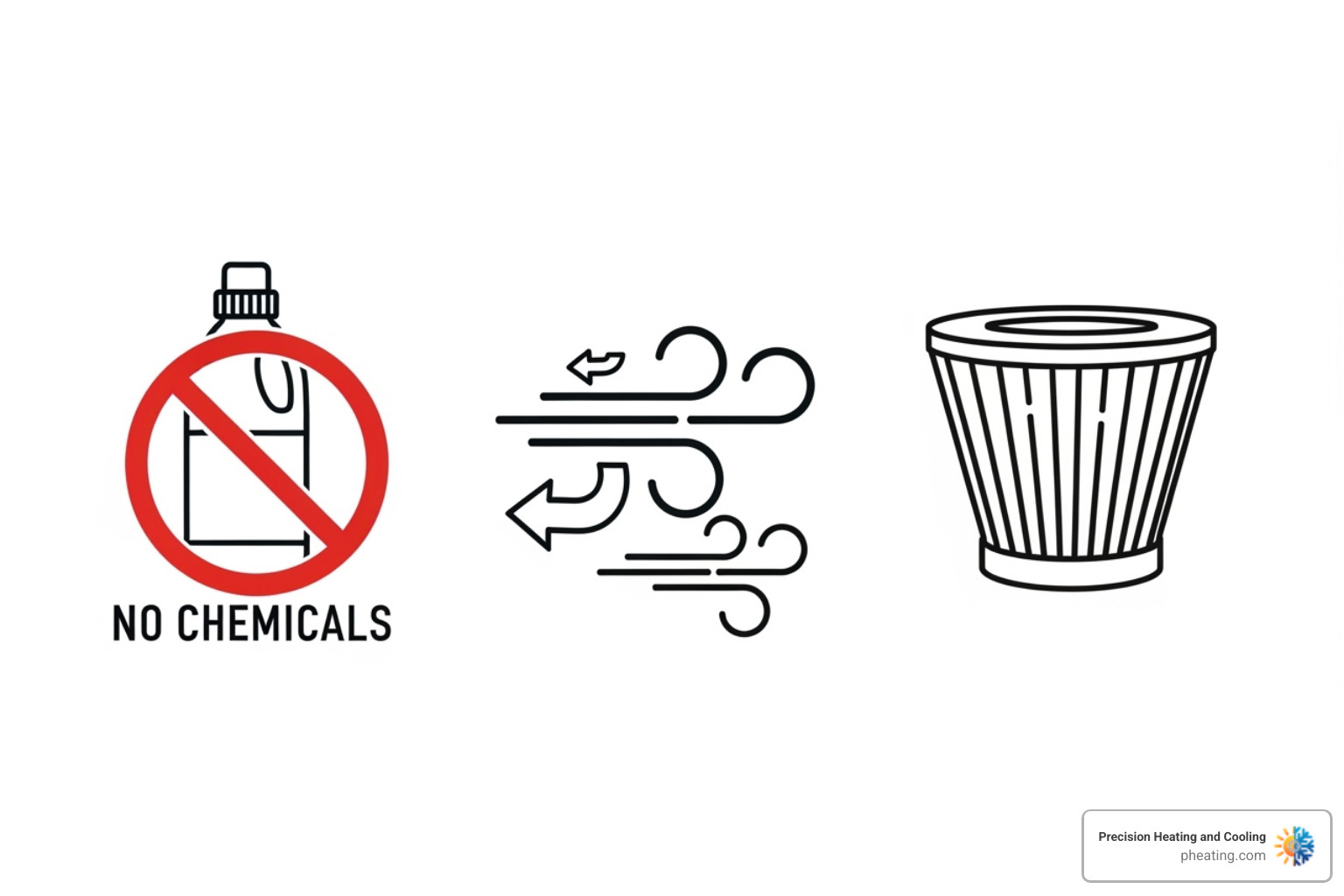
Pillar 1: Source Control
Here's a simple truth: the best way to deal with indoor air pollution is to stop it before it starts. Source control means tackling problems at their root - and it's often the most cost-effective approach to improving your home's air quality.
Start by making smarter choices when you shop. When you're painting that spare bedroom or buying new cleaning supplies, look for products labeled "low-VOC" or "no-VOC." These emit far fewer harmful chemicals into your air. Your nose (and lungs) will thank you later.
Your appliances need proper attention too. Gas stoves, water heaters, and clothes dryers should all be properly vented to the outdoors. That dryer vent isn't just about preventing fires - though that's certainly important. Regular dryer vent cleaning for home safety also prevents humid air and combustion byproducts from building up inside your home.
Don't overlook the power of humidity control either. High moisture levels create perfect conditions for mold and mildew growth, which then release spores into your air. Use dehumidifiers in damp basements and make sure your bathroom and kitchen fans actually work (and that you use them).
Sometimes the simplest solutions are the most effective. Regular cleaning with a HEPA-filtered vacuum and dusting with damp cloths can dramatically reduce dust, pet dander, and other particles floating around your home.
Pillar 2: Ventilation
Your home needs to breathe, just like you do. Ventilation is how fresh outdoor air replaces the stale, polluted air inside. This is especially crucial in our modern, energy-efficient homes that seal so tightly they can trap pollutants like a closed jar.
You have two main ventilation options, and understanding the difference helps you make better decisions for your home's clean air circulation:
| Ventilation Type | Description | Benefits | Considerations |
|---|---|---|---|
| Natural | Opening windows and doors, cross-ventilation | Free, simple, effective when outdoor air quality is good | Weather-dependent, not practical during wildfire season or extreme temperatures |
| Mechanical | Exhaust fans, whole-house fans, HVAC systems | Works regardless of weather, can filter incoming air, consistent performance | Requires electricity, may need professional installation and maintenance |
Natural ventilation works wonderfully when conditions are right. Opening windows on opposite sides of your home creates cross-ventilation that can quickly refresh your indoor air. But here in the San Jose area, we face unique challenges. During wildfire season or high pollen days, opening windows might actually make your air quality worse.
That's where mechanical ventilation becomes your best friend. Bathroom exhaust fans, kitchen range hoods, and whole-house ventilation systems work regardless of what's happening outside. They can even filter the incoming air, giving you the fresh air exchange you need without the outdoor pollutants you don't want.
For more detailed information about whole-house ventilation systems, the Energy Saver guide on Whole-House Ventilation provides excellent technical insights.
Pillar 3: Filtration
Even with perfect source control and ventilation, some particles will still make it into your home's air. That's where filtration comes to the rescue, acting like a safety net to catch what the other two pillars might miss.
Your HVAC system's air filter is your first line of defense. But not all filters are created equal. Pleated filters generally perform better than basic fiberglass ones, and understanding MERV ratings helps you choose the right level of filtration without overworking your system.
Air purifiers can provide additional protection, especially in bedrooms or other spaces where you spend lots of time. HEPA filters are the gold standard here - they trap an impressive 99.97% of particles that are 0.3 microns or larger. That includes most dust, pollen, pet dander, and even some bacteria and viruses.
For comprehensive protection throughout your entire home, consider whole home air filtration. These systems integrate with your existing HVAC system to provide continuous, whole-house air cleaning.
The beauty of these three pillars is how they work together. Source control reduces the pollutants entering your air, ventilation dilutes and removes what remains, and filtration catches the particles that slip through. Together, they create a comprehensive approach to clean air circulation that keeps your San Jose home healthy and comfortable year-round.

Flexible payment options to make your goals affordable and stress-free.

Warm Up Your Home: Expert Furnace Repair in Sunnyvale, Cupertino, and More
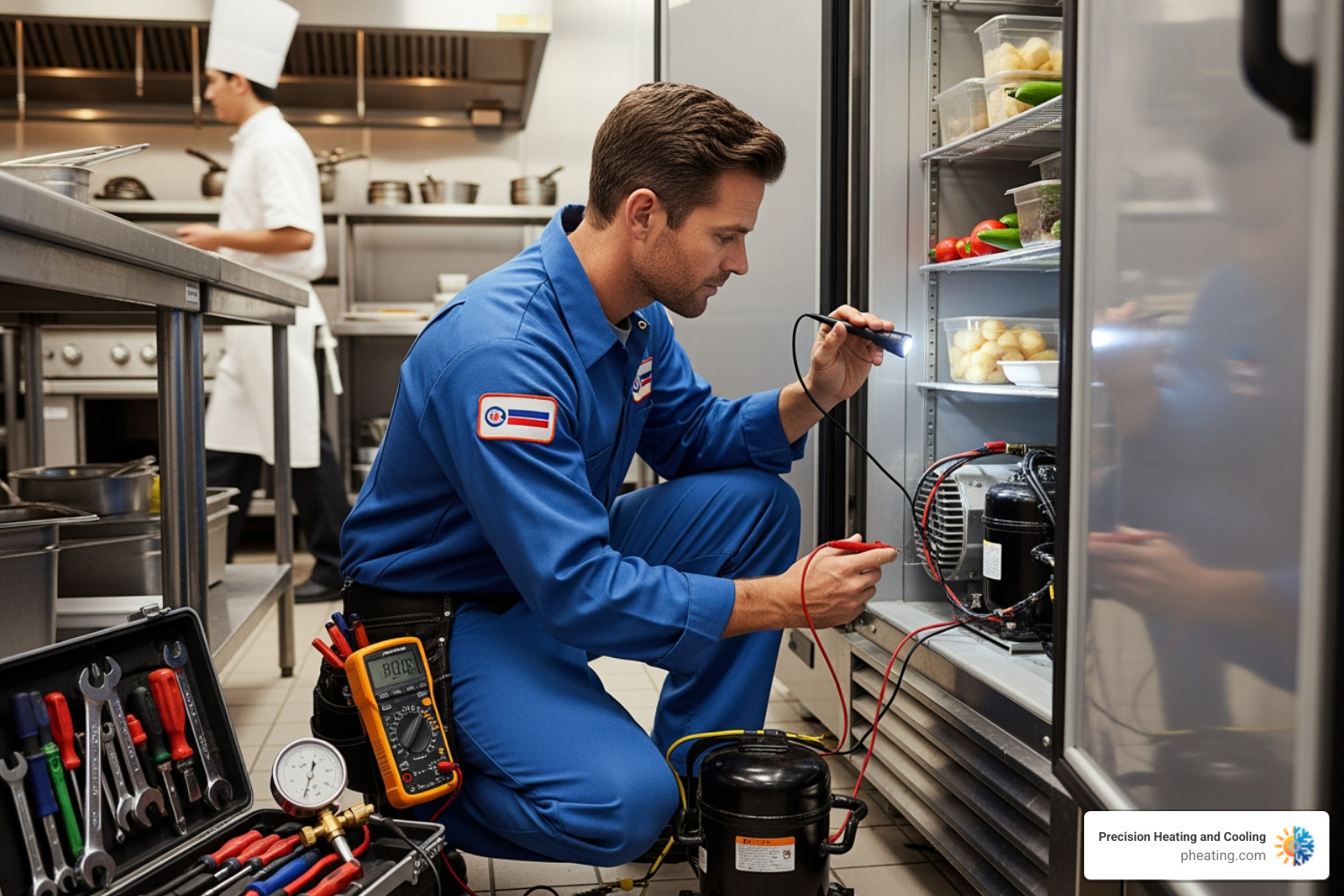
Commercial Refrigeration Repairman: What It Takes to Fix the Chill
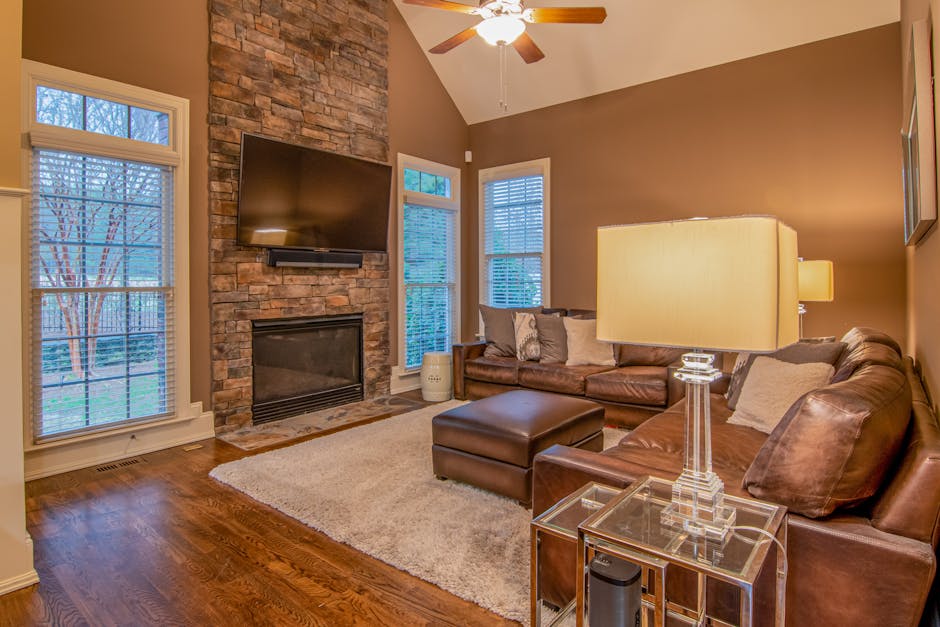












.avif)

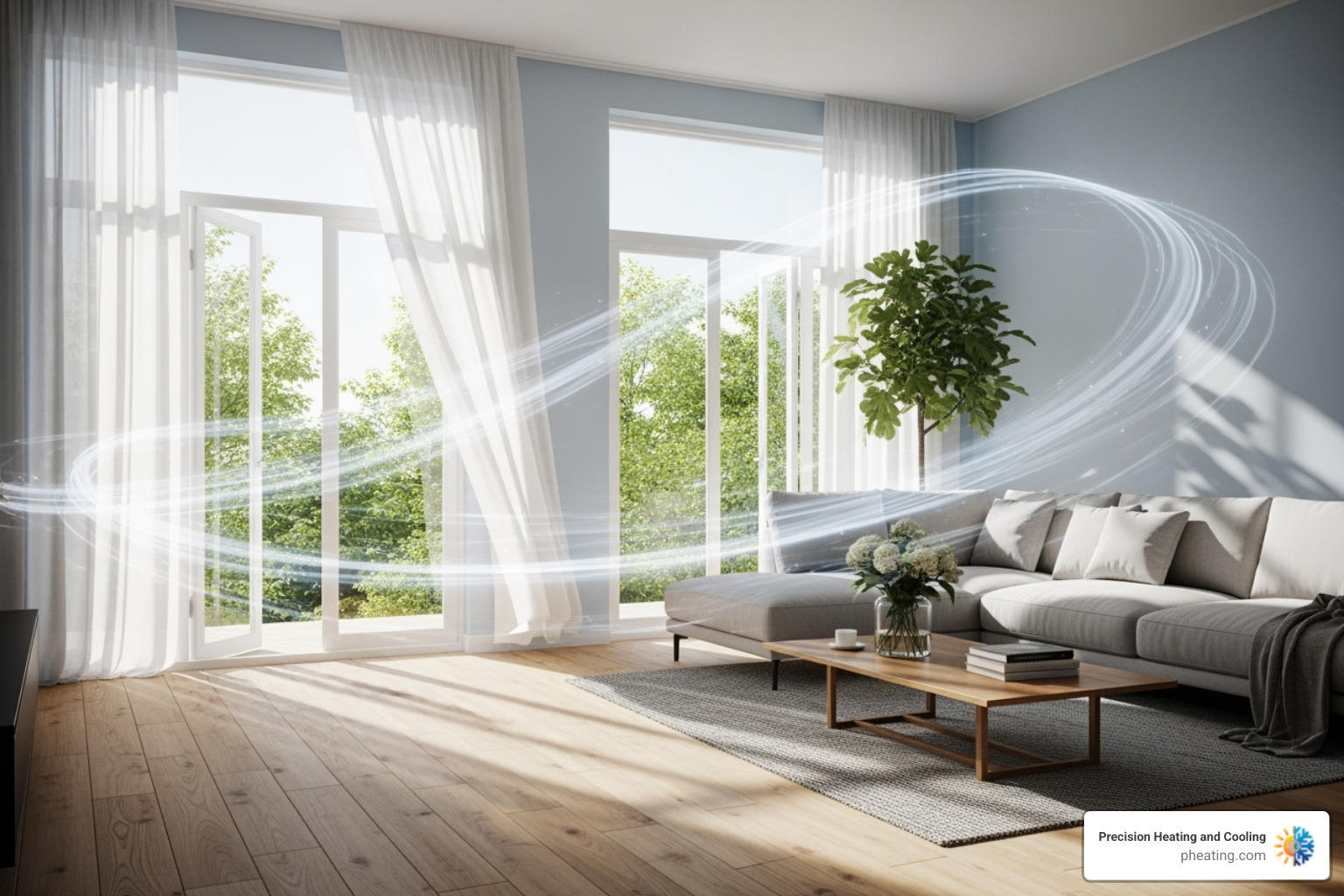








.avif)